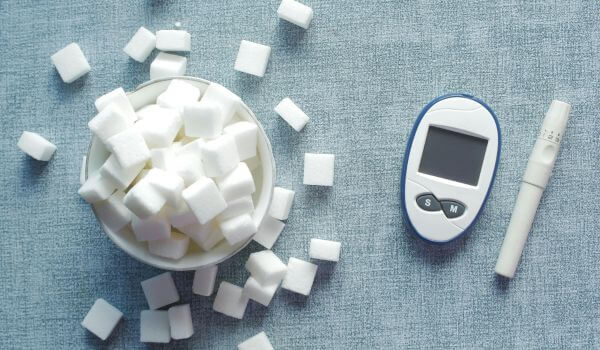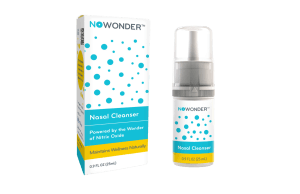I have been looking forward to the latest installment in the series of articles published in the Jerusalem Post by their contributor, Andrea Samuels. Her series titled “Menopause Diaries” deals with her experience transitioning into menopause. With her permission, we republished the first article in the series at the end of February 2024, along with some of my input on how any of the negative effects of menopause can be eased by fairly simple treatments. I was especially pleased to read the latest post in the series that shifts focus to andropause, and before I get into the specifics of her article, I’m reproducing it here in full, with her permission.
Exploring the Unspoken: Male Menopause and the Taboo Around ItBy Andrea Samuels, Jerusalem Post, May 12, 2024 So, what about guys? When I started this column, men and women asked me about male menopause – or, if you will, manopause. Recently, I sought out a couple of menfolk to find out a bit more. Like most, I knew little about the subject, as seen from across the sexual divide. Small wonder. For one thing, unlike its female counterpart, male menopause isn’t openly discussed. Support groups for men who are experiencing manopause, such as the women’s Facebook menopause support group with more than 35,000 members to which I belong, are thin on the ground. A computer search reveals one such group for males with only a smattering of members. Some even deny its existence altogether, instead blaming the aging process for the changes that men experience at around the same age as menopausal women – which is to say, the late 40s to early 50s. “The term ‘menopause’ has evolved to mean a brief period during which the ovaries complete their evolution and cease to ovulate,” Dr. Stanley G. Korenman, an associate dean and professor of medicine, writes in the Western Journal of Medicine (WJM). Men have “no specific analog to this narrowly defined menopause,” Korenman believes. Medical directors Duncan C. Gould and Richard Petty strike a similar note in the WJM: “The term ‘male menopause’ is inappropriate because it suggests a sudden drop in sex hormones such as occurs in women in the perimenopausal state.” But they go on to say that “because of the similarity of most of the symptoms between men and women, the term [male] ‘menopause’ gained popularity and has, unfortunately, stuck.” As a way of getting around this conundrum, Korenman coined a new term. “I dislike the term ‘male menopause’ because of its reference to cyclicity, and I have adopted ‘manopause’ as an umbrella term to describe age-related alterations whose exact nature is still to be determined,” he explains. So what is male menopause?What, then, is manopause, and what changes can a man expect to experience when he reaches that stage of his life? What, as the cool kids say in med school, are the diagnostic criteria? Research scientist Dr. Joshua Smith answers this in his article on the Medichecks website: “As men age, their testosterone levels tend to decline – this is a normal process. It’s sometimes referred to as ‘menopause’ or ‘andropause,’ but these terms are misleading since it’s a very different process from menopause in women. In most men, male hormone levels decline very gradually and tend not to cause symptoms.” The drop in testosterone levels, known as hypogonadism, occurs when the testes don’t make enough of the hormone. It typically affects older men, particularly those who suffer from obesity or type 2 diabetes. Smith continues, “Some sources state that testosterone levels begin to drop in the 30s, with an average decline of 1% per year. Other data show that this decline may be slower than we think, starting in the early 20s, but almost plateauing by the late 30s.” It’s hard to know whether symptoms that occur around this age are caused by hypogonadism or the aging process, which means that all too often, they are overlooked. Checking testosterone levels is a simple answer to the problem. Keen to know more about the effects of manopause and how one deals with the symptoms, I spoke to 57-year-old Ben, and Jerry, who turned 60 last year (not their real names). At the start of our conversation, Ben confirmed that he wasn’t sure whether his symptoms – which included graying hair and hair loss, disturbed sleep, hot flashes, irritability, and, most frustratingly, erectile dysfunction – were “menopausal or generic aging stuff.” Whatever the cause, they didn’t come on gradually as one might expect. Instead, he confirmed, they “all came at the same time,” making it plain to him that his “body was going through changes.” “It’s an aging thing, but it definitely started all at the same time,” he said. “For example, if I cut my thumb, it would take longer to heal, and the healing is never as perfect or hermetic as it was prior to going through this process.” Despite not consulting his doctor or taking anything for these symptoms, most have largely abated. However, his erectile dysfunction doesn’t seem to be improving: “I don’t know whether that will heal itself at all,” he lamented. Unlike Ben, sexagenarian Jerry is convinced that the significant changes in his body are down to a version of male menopause, lamenting the fact that it’s a subject that is not widely discussed among guys. “Women talk about menopause a lot to other women, while men don’t talk about it at all,” he said, before adding sagely, “but they should.” For him, the debatable issue of male and female menopause is clear. “It’s a reality for both sexes and is comparable because both occur at the same age.” From around his late 40s, Jerry noticed a gradual drop in his energy levels, concentration, and sporting abilities. Memory loss was also becoming a problem. In short, his overall sense of well-being was suffering. Not willing to succumb to his symptoms and simply wait for them to pass, he sought the advice of professionals. He now has regular blood tests to check his testosterone levels, which initially were found to be significantly low. Like many women suffering estrogenic loss, he has been prescribed HRT; small vials of testosterone that he injects periodically. He also takes zinc supplements and medicinal cannabis oil from time to time. As a result, he confirmed that he feels and looks better, has more energy, and his sex drive has improved. His cognitive skills and concentration levels have also “demonstrably” increased. Male menopause, manopause, or whatever name is given to it, is significant. The reluctance to discuss, or even recognize, these changes only makes it more difficult for men to seek help, which is a shame not just for them but for their partners as well. It’s time to eliminate the stigma about male menopause by encouraging men to speak openly about what is, after all, just another part of life’s rich hormonal tapestry. |
For the sake of brevity and consistency in my follow-up to her article, I’ll confine myself to the more generally accepted term of “andropause,” although I do like her use of “manopause” because it encapsulates two themes.
The first concept is that andropause shouldn’t be an issue that is shunned from public view, and deserves just as much attention and discussion as “menopause” gets. The second thought is that although andropause is a label for what could be an uncomfortable or unwanted development in a man’s life, it can indeed be nothing more than a pause, as long as it is handled properly and in good time.
Q1. Is there a test that diagnoses andropause?
Unlike female menopause, there is no clear-cut biological marker that indicates a transition into andropause. The term ‘menopause’ explicitly indicates that something has ceased, specifically as a woman transitions from her reproductive years into later life. The ‘pause’ refers to menstruation (hence, menopause), which is derived from the Latin word ‘menses,’ meaning the periodic bleeding that concludes a cycle of ovulation when no fertilization has occurred. In contrast, andropause, often referred to as ‘male menopause,’ does not involve a complete cessation of reproductive capabilities but signifies a gradual decline in testosterone levels in men, leading to various physiological and psychological changes. Unlike menopause, which typically occurs within a relatively predictable age range and involves a dramatic drop in hormone production, andropause is characterized by a more subtle and gradual decrease in hormone levels without a definitive biological marker. This difference underscores the less abrupt and more variable nature of andropause compared to menopause. Additionally, the symptoms are common to many other conditions, making differential diagnosis essential.
Q2. Is there scientific evidence to back up the theory of male menopause?
The Massachusetts Male Aging Study (MMAS) was probably the most extensive study into the causes and effects of aging on men. It was a community-based, random-sample, observational survey of men between the ages of 40 and 70 conducted in 1987 over a span of two years. The study collected hard evidence from blood samples and physiological measurements, conducted interviews to gather information on health status, medications, smoking, and lifestyle, and collected detailed self-assessment responses from a self-administered sexual activity questionnaire.
A follow-on analysis of blood samples of more than 1000 men who were enrolled in MMAS was published in 2002 that looked at long-term trends in total and bioavailable testosterone levels.
More about testosteroneTestosterone is the main androgen hormone that determines the gender of a person. The default gender of humans is female, and even if the cells have a male genome with a pair of XY chromosomes, unless there is a high level of testosterone in the very early stages of differentiation, a baby will develop with female characteristics. There are several conditions, part of a category known as Disorders of Sex Development (DSD), in which a range of medical conditions can produce atypical chromosomal, gonadal, or anatomical sex development. Total T Total T is shorthand for total testosterone, and it refers to the entire amount of testosterone hormone present in the bloodstream. The great bulk of testosterone in the body is attached to either albumin or sex hormone-binding globulin (SHBG). Only a small fraction of testosterone remains unbound and free to enter cells and exert its effects. Bioavailable Testosterone Bioavailable testosterone refers to the fraction of testosterone that is not bound to SHBG. It includes both free testosterone and the testosterone that is loosely bound to albumin, which can easily detach and become active. The levels of bioavailable testosterone are important because they represent how much testosterone is readily available for use by the body. It’s the form of the hormone that can actually enter cells and perform the functions testosterone is needed for, like supporting muscle growth, influencing mood, and maintaining energy levels. |
The follow-up study tracked testosterone levels in the pool of men as they aged. It produced reliable evidence that total T and bioavailable T levels decline in a fairly straight line over the age rage studied (40-70). Total T levels fell by around 2% each year from age 40, and both albumin-bound and free testosterone fell by close to 3% per year. Putting that in simplest terms, a man aged 40 can expect to see a decline in his available testosterone levels of between 50 and 60% by the time he reaches 60.
The MMAS and the follow-up study are not the only ones that set out to scientifically prove the basis on which the theory of male menopause is built, but they are the ones that most comprehensively and undisputedly established the evidence for the reality of this condition.
Q3. What are the outward signs of male menopause?
As we have discussed in previous articles that deal with menopause, it has a fairly clearly defined timeframe. It can be accompanied by clear signs in daily life and supported by quick and reliable clinical tests. In simplest terms, menopause is triggered by a steep decline in a fertile woman’s estrogen levels (estrogen is the female equivalent of testosterone) that begins to interrupt her monthly ovulation cycle, resulting in irregular periods, and symptoms like hot flashes, mood changes, sleep problems, and vaginal and bladder problems. This phase, known as perimenopause, passes on to full menopause once a woman has missed her monthly periods for 12 straight months.
Because the decline in testosterone is gradual, it is not always obvious what has changed from year to year. Andropause can produce a range of symptoms that are not always clearly identifiable as coming from declines in testosterone levels, since that can also be caused by other developments that are related more generally to aging. However, most studies agree the main symptoms associated with andropause can include:
- Decreased sexual desire
- Erectile dysfunction
- Mood changes, including irritability and depression
- Fatigue and reduced energy levels
- Decrease in muscle mass and strength
- Increase in body fat
- Decreased bone density
- Reduced cognitive function
- Erectile dysfunction
It’s also important to keep in mind that these are the outward signs of what low testosterone could be causing. Deeper inside the body, prolonged shortages of the hormone can lead to more serious diseases, including type 2 diabetes, osteoporosis and heart failure.
Q4. Are there treatments for male menopause?
This is a question I get asked a lot. The most obvious answer can be derived from the solution that has been widely adopted to treat menopause in women, which is Hormone Replacement Therapy (HRT), although, for obvious reasons, the hormone that needs to be replaced is different. Women need to increase the levels of estrogen, but men need testosterone.
Testosterone replacement therapy (TRT) has been shown to help improve several of the classic symptoms of andropause, such as sexual function, libido, bone density, muscle strength, and mood. I have written about AndroForte Cream, which directly supplies bioavailable testosterone in a simple and effective format that can be applied to the scrotum, where it is absorbed 5 to 7 times more efficiently than if it’s applied to the upper body. It is the one I recommend most often, both because of this unique mode of application and because it generally has few negative side effects.
In addition to AndroForte Cream, there is Androgel, which works much the same way as AndroForte. They are both prescription-only creams, and physicians will need to order regular blood tests to measure testosterone levels.













